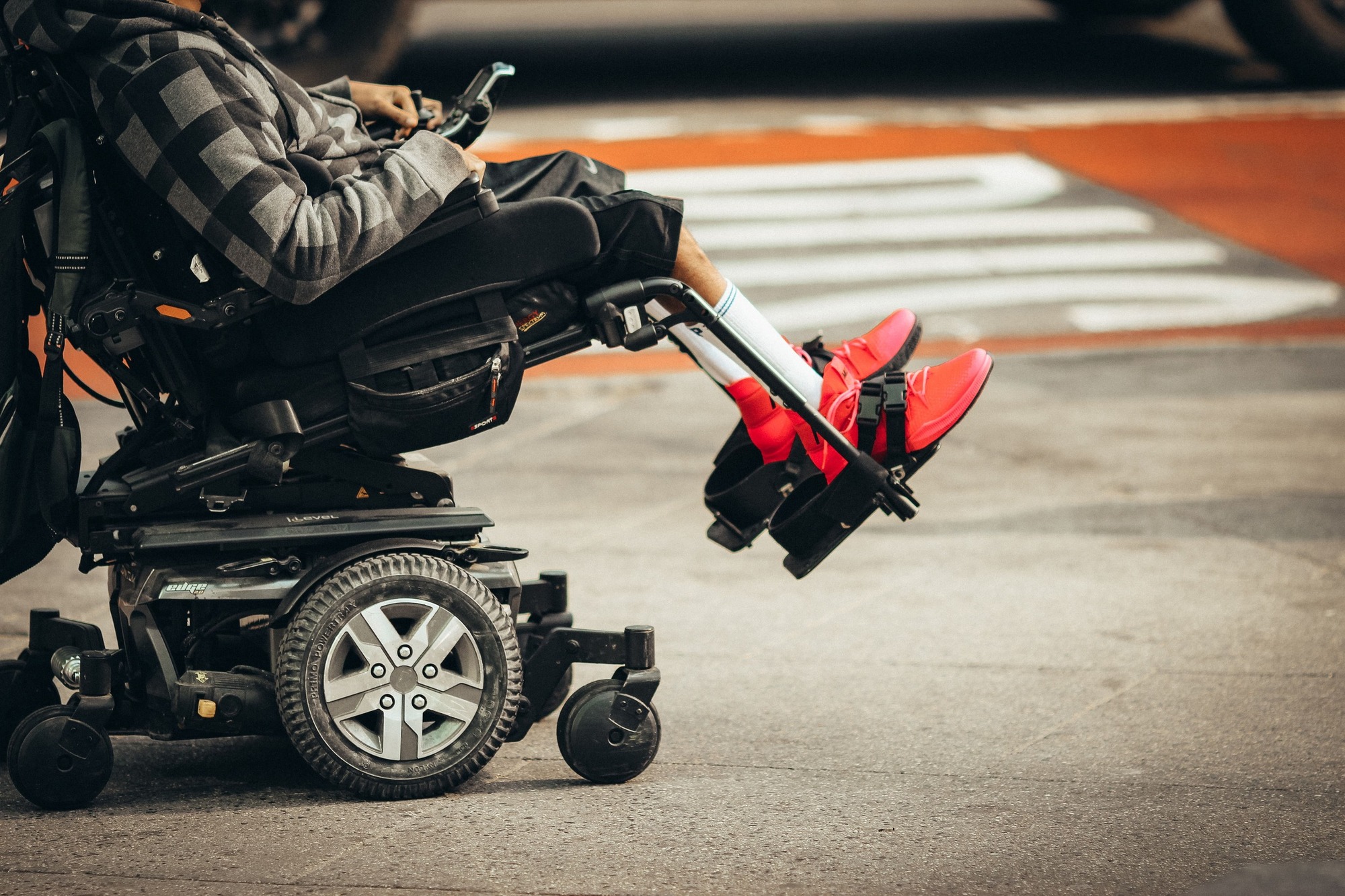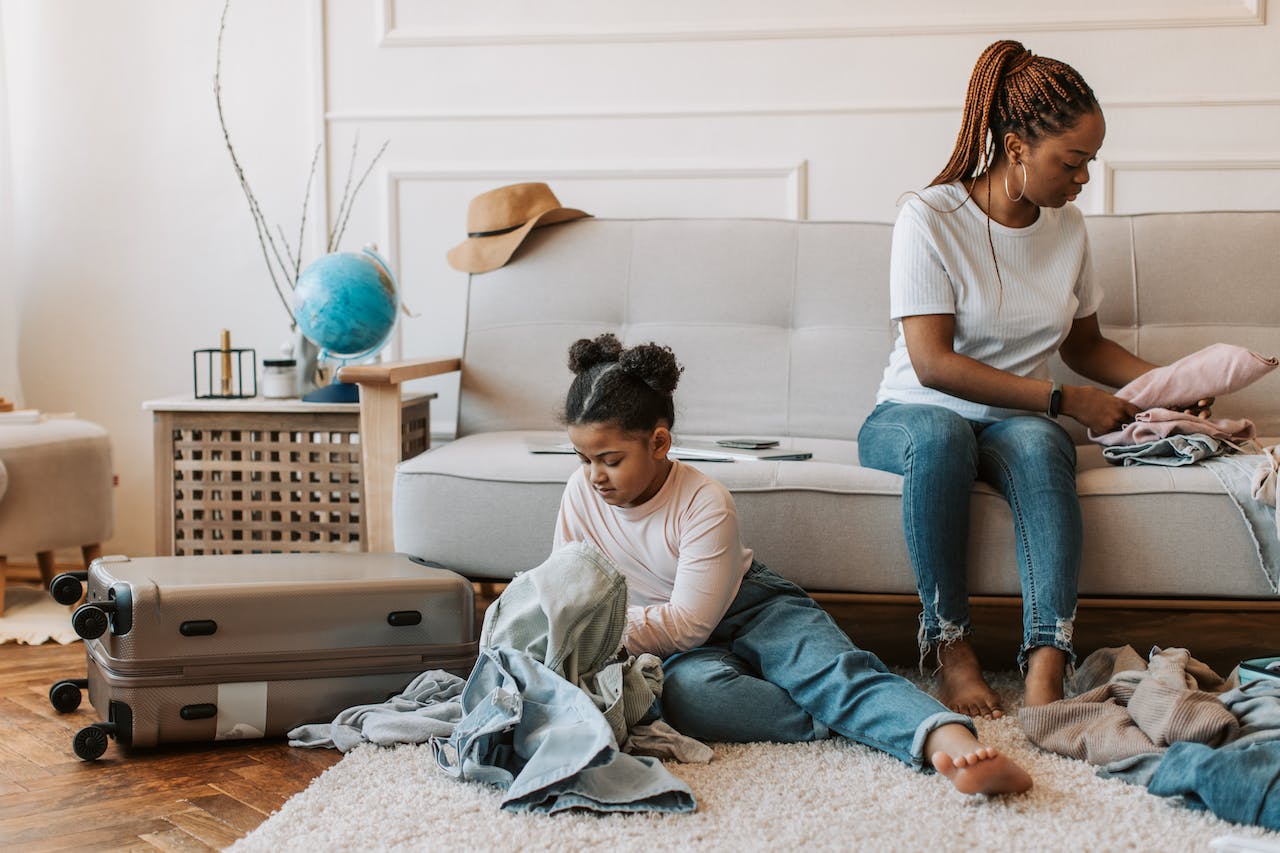Each type of disability is different and requires special modifications to your house. Adaptations for every situation are key to creating a space where a member of your family with a disability can live a safe and happy life. That said, we’ve rounded up expert advice from professionals that offered some general rules to have in mind about adapting your house to a family member living with a disability.
What are the essential room adaptations you will need to make for children with limited mobility?
“The first thing is that the room needs to be as open as possible. A minimal amount of furniture should be placed in it. The floor should be smooth and soft (no tiles where a walker, cane, or wheelchair can get stuck). There should be rails along the walls to assist if need be and with soft lighting.”
How to adapt the bathroom for children with physical disabilities
“When approaching bathroom adaptations for children with physical disabilities it’s important to consider the following:
1. What is difficult to use or maneuver in the bathroom?
2. Are you going to use the existing bathroom space or will you be remodeling the space?
3. What do you and other caregivers need to comfortably and safely support your child during bathing, toileting and using the sink?
4. Will the bathroom be used by others and therefore require accessories that can easily be removed and folded away?
5. Are there relatively inexpensive and practical ways to address the issues you have such as grab bars, toileting support systems or shower benches?
6. What do you need to consider for the child’s long term needs? ie moving grab bars, additional wall reinforcements, the possibility of ceiling track systems
7. Do you need to waterproof the bathroom?
8. Do you need to replace your flooring? You may consider a floor tile with a substantial grip to prevent slipping.
9. Is your child often cold during or after showering? You may consider adding an exhaust fan with a heater to keep the temperature comfortable
10. Where could you improve your child’s independence? Would something such as a removable showerhead, automatic soap dispenser or touchless faucet be helpful?”
Cerebral Palsy Research Network
How to create a remote learning environment for students with disabilities at home
“To create an optimum home learning space, the best thing you can do is ask your disabled child. Forego the old-fashioned notions that a student has to be sitting at an uncomfortable desk with both feet on the floor. If a lap desk on a beanbag chair is their preference, go for it!. Each of us has our own preferred level of light, sound, visuals, screen settings, and comfort.”
What do parents need to know before using GPS trackers for their children with autism?
“When looking into purchasing a tracker for your child with autism, there are a few things that you may want to look for:
-Tracking Capability: Be sure that any tracker you consider isn’t limited to only using bluetooth. A tracker that uses cellular connectivity and GPS to give the live, current location is literally a life saver.
-Continuous Monitoring: Tracking without having to open your app is also something to consider – these types of solutions bring the greatest peace of mind. If you have a tracker that only updates every few hours or only updates when you open the application, you are going to miss important updates that could be dangerous to your child’s safety.
-Notifications/Alerts: Look for a tracker that provides arrival and departure alerts to known & unknown locations so you’re aware of any deviations to the norm before an emergency transpires.
-Voice Capability: Having the ability to call the tracker to either talk to your child or just to listen to their surroundings is another invaluable feature to look for.
-Wearing Options: For those with autism, sensory sensitivities are often an issue, so devices with versatile and waterproof wearing options are recommended.”
Tamara Wood – AngelSense
What is the best approach to get hearing siblings into learning ASL?
“I am a hearing mother and I learned ASL in school. I started teaching my son at a young age. From my experience, I have found you have to cater to the children’s interests. Food, colors, and animals are easy ways to get them started with ASL. ASL Storytelling is another way. You can watch stories or go to an ASL storytelling events near you. ASL is so expressive, the stories usual keeps the younger children engaged. Maybe you could start with their favorite characters too. Learn Disney character signs, or even superheroes. From there, you can use signs for your daily routine, and then go into more details and learning/teaching ASL grammar.”
Jessica, StartASL.com
What do parents need to know before buying sensory-friendly and adaptive shoes?
“Velcro or easy on shoes is a must. No tags, lots of room for wiggly toes, and not tight. interactive with bright colors and fun textures, easy to clean (any spec of dirt in or out could bother a child). For orthotics, the shoe must have a wide opening that can stay open when positioning to insert the foot. The closure must be adjustable and be secure. A customizable closer system such as the one on our Dean Adapt shoe style is ideal. The Dean Adapt has extra long straps but they can be cut to fit. “
Tips for Hosting Playdates for Kids with Special Needs
- “Create a schedule with your child ahead of the day so they will know what to expect.
- Choose activities that are enjoyed by your child and are strengths for them (if they struggle with fine motor skills, don’t plan a craft project; if they are good at building, provide pillows and blankets to make a fort).
- Use sensory activities such as finding small toys in a bin full of rice to include a calming element in the playdate.
- While it is important to be nearby, allow the children to work together and problem solve on their own before stepping into a conflict.”
Amy Hengstebeck, Kaufman Children’s Center for Speech, Language, Sensory-Motor and Autism Treatment (West Bloomfield, MI)
How to be more inclusive with blind guests at home
“Whether you’re inviting a blind guest over for dinner or adjusting to a relative’s recent loss of vision, here are some tips to help make your home more accessible and comfortable.
Keep the Floor Clear: Before your guest arrives, clear your floor of objects like shoes, toys, or books so your guest can navigate more easily.
Describe Your Home: When your guest arrives, describe the setting as you would to any person, offering a simple orientation to help your guest feel at home.
Introduce Pets: If you have a pet, let your guest know in case they have any allergies or issues. When they arrive, introduce your pet(s) so that your guest can become comfortable.
Describe Meals: Describe what’s on the menu and offer to put a plate together for your guest. Envision a clock face to help your guest understand how the food is arranged on the plate.
Provide Visual Updates: Try to be conscious of what you and your other guests are seeing, and offer to describe what’s happening. If you’re admiring a friend’s new watch, describe the color and style. If a new plate of food is set out, or guests are arriving, talk about what’s going on. Guide Your Kids: If you have young children, discuss how to interact with your blind guests. Let them know if a guide dog will be coming and not to interrupt the service work of the animal by petting or playing with it.”
Besides learning a sign language, what else should parents do to support a deaf child?
“Language is Everywhere! This is one of the most important things to understand and to incorporate throughout your life when raising a deaf child.
Many families find themselves concerned that their child may never speak words. Speech is one way to communicate it is not the only way.
Writing gives access to language. Reading gives access to language. Sign language gives access to language. Speech gives access to language as well. Most importantly, language does not delay language. You’re deaf child can have it all. They can learn to read, they can learn to write, they can learn to sign or Cue, and they may also be able to develop speech. Buy 3 x 5 cards and label everything in your house. Put a card on the microwave that says “microwave,” one on the door that says “door,” one on the ceiling that says “ceiling.” Use the manual alphabet, in American Sign Language, to spell words to each other. Deaf children are able to master reading words through fingerspelling at a very young age. Your child will understand that there’s a written word for everything, a word that can be read, there is also a spoken word for everything, a finger-spelled word for everything, and there is a sign for most everything. Giving your child multiple ways to communicate can instill a strong sense of confidence in communicating throughout their whole life.”
What kind of elevator would be the best option for children in wheelchairs?
“When considering a home elevator for someone in a wheelchair, you really want to consider both the persons needs and the wheelchairs functionality. Is the child able to use the wheelchair themselves, will there always be a second person with them? What is the size of the wheelchair, does it recline, etc? There are many different styles of wheelchairs and all require different floor spaces and turning radii which will also influence the size of your home elevator. It is always best to talk to a licensed elevator contractor and discuss your current needs and any future anticipated needs to make sure you are getting the proper fit.”
Shannon Chasteen, Symmetry Elevating Solutions
What should people consider before building ramps at home?
“Before investing in any construction project to modify your home, check with your landlord or Homeowners Association. Generally, you cannot be prevented from having necessary disability-related accommodations, but there may be requirements for the style and types of materials you can use, especially for exterior modifications, and you may need to submit designs for approval before starting construction. Also, research the construction codes in your community and make sure you follow all codes requirements.
Consider whether you need a wheelchair ramp or walker steps. A wheelchair ramp is a long, inclined surface, whereas walker steps are a series of shallow, platform-type steps. If you use a walker or cane, walker steps might be easier to navigate than a ramp. Take wheelchair safety into consideration. Make sure you have space for an ADA-compliant wheelchair ramp. Measure the number of inches rising from the place your ramp will start to the endpoint. For each inch of rising, you need a foot of the ramp. This means you will have a very long ramp if you have steps of more than a few inches. If you don’t have construction experience, or if you aren’t familiar with codes and compliance regulations, get a professional to construct your ramp.”
United Cerebral Palsy of Middle Tennessee
Essential factors for childproofing a house when you have a child on the autism spectrum
“Families in the autism community do what they have to do to make their homes livable, as stimming, special interests and sensory integration become a huge part of family life. A healthy sensory environment provides opportunities for movement, stimulation and lack of stimulation. It may be advantageous to have one area of the home filled with bright colors and activities that the family enjoys, including a television and stereo, and another area of the home with blank walls, soft colors, soft textures and quiet activities such as books or puzzles. It may be necessary to devote a small area of the home to the pursuit of special interests and goals.”
What should parents consider before buying a standing power chair?
“When planning accessibility options for a child, one of the most important things to consider is their rapid growth. Since children and teens can sprout like weeds, taking into account the longevity and adaptability of their mobility aids is a big factor. When considering an investment in a standing power wheelchair, find out if it can be adjusted to accommodate the new height along the way. At Redman, we are able to fit our smaller 18×18 pediatric chair with a taller back and long legs as the child grows so the chair effectively grows along with the child. Another important aspect to incorporate for any adolescent is their overall physical development. When confined to a standard seated wheelchair during the day and laying flat at night, the body doesn’t get much chance to use many muscles. When you employ a standing and positioning wheelchair (also known as a complex rehabilitation chair, CRT), the core muscles in the body are able to be used and stretched regularly. The standing and other positions also allow for improved circulation, bladder function, spasticity, bone density, and a host of other clinical benefits – not to mention the mental health benefits that come with being able to stand up, be more independent, and talk with peers eye to eye!”
What should parents know before buying sensory-friendly clothing?
“What is an in-depth deep dive into what your child’s needs are? This is the first thing to consider. What are they trying to help with or accomplish?
- Sensory calming
- Sensory alerting
- Fabric aversions (tactile sensitivities) causing stress
- Does your child understand how to dress? (conceiving the idea of how to dress (praxis)
- What are the challenges to carrying out dressing even though they are physically able (praxis)?
- Does your child have physical motor challenges due to a neurological or physical difficulty?
- What are their fine motor skill deficits and abilities?
- Do they need ease of function when they need to use the bathroom due to physical reasons, sensory reasons, or toileting reasons?
- Do you describe your child as clumsy (sensory) and would have time challenges and motor function challenges?
- Does your child constantly mouth or chew their clothing?
- Do they have poor muscle tone?
- Do they have poor tactile (touch) discrimination?
- Do they demonstrate poor bilateral coordination?
- Are there emotional concerns related to the sensory system overload?
Determine the aim of the intervention needed within the clothing
Common accommodations for those that have some of these sensory, emotional, and motor-related issues include:
- A lack of agitating labels and seams, or easy to remove tags and flat seams.
- Any Tactile sensitivity
- Ease of Function
- Closure consideration: button size, zipper size, pull-overs, magnets, Velcro (What works best?)
- Added layering/weight/compression for nervous system calming.
- Relevant styling and color preferences
- What is the fabric if your child tends to chew their clothing?
- Washability and Wear and tear of the clothing.
- Does the fabric retain its shape and purpose if looking for compression?
- Safety of the product
- Combating a child’s sensory sensitivity is crucial to their development. If they are worried about their clothing all day, they will not be able to participate in other enriching growth opportunities.
Based on the sensory integration technique, the added weight or pressure provides the special needs child with unconscious proprioceptive and deep tactile pressure information from their muscles and joints. As a result, they may better integrate sensory information and remain calmer. They may become more organized and improve their ability to concentrate, learn, and better engage in activities of daily living.”
What are the best exercises for children in wheelchairs?
“All the exercises mentioned can improve a person who uses a wheelchair because they deal with movements that an individual does on a daily basis thus making their daily lives better. Shoulder press: Taking weight and pressing it above the head till the arms are almost straight then bringing it back down to chest level.
Lateral Shoulder Raise: Taking a weight to the side of the body with one arm and raising it up till the arms are horizontal to each other.
Tricep dips: Using either the chair or an elevated surface, press the body up using only the triceps.
Seated chest press: While holding a weight at chest level, press the weight out til the arms are almost straight, then pull back to the chest.”
As families navigate the journey of modifying their homes and lifestyles to support family members with disabilities, another aspect to consider, though often overlooked, is the role of home insurance. While the primary focus remains on creating a safe, accessible, and comfortable living space, it’s also prudent to be aware of how these changes might impact home insurance policies. From installing special equipment to remodeling for better accessibility, each alteration enhances the quality of life and potentially affects the home’s value and safety profile. Understanding and updating your home insurance to reflect these modifications can ensure that your family’s space remains protected, offering peace of mind as you continue to make your home more accommodating for all members.
Supporting family members with disabilities requires a thoughtful, personalized approach. The advice from experts and experienced individuals in this article highlights the importance of adapting living spaces for safety and mobility, creating effective learning environments, and understanding the nuances of communication. Each suggestion, from sensory-friendly designs to the right assistive technologies, emphasizes responding to the unique needs and preferences of individuals with disabilities. This guidance is invaluable for families aiming to create environments that not only accommodate but empower their loved ones, enabling them to lead fulfilling lives.




